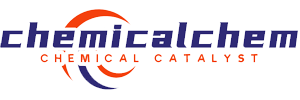
structural formula
| business number | 02nw |
|---|---|
| molecular formula | c8h9br |
| molecular weight | 185 |
| label |
bromophenylethane, 2-phenylbromoethane, 2-bromoethylbenzene, β-bromophenylethane, β-bromoethylbenzene, bromoethylbenzene, (2-bromoethyl)benzene, b-phenylethyl bromide, beta-bromoethyl benzene, beta-bromophenylethane |
numbering system
cas number:103-63-9
mdl number:mfcd00000240
einecs number:203-130-8
rtecs number:cy9032000
brn number:507487
pubchem id:none
physical property data
1. properties: liquid.
2. density (g/ml, 25/4℃): 1.366
3. relative density (25℃, 4℃): 1.3587
4 . melting point (ºc): -55.9
5. boiling point (ºc, normal pressure): 217.5
6. boiling point (ºc, 5.2kpa): undetermined
7. refractive index: 1.5473
8. flash point (ºc): 71
9. specific rotation (º): undetermined
10 . autoignition point or ignition temperature (ºc): not determined
11. vapor pressure (kpa, 25ºc): not determined
12. saturated vapor pressure (kpa, 60ºc): undetermined
13. heat of combustion (kj/mol): undetermined
14. critical temperature (ºc): undetermined
15. critical pressure ( kpa): undetermined
16. log value of oil-water (octanol/water) partition coefficient: undetermined
17. explosion upper limit (%, v/v): undetermined
18. lower explosion limit (%, v/v): undetermined
19. solubility: miscible with most organic solvents, slightly soluble in water.
toxicological data
acute toxicity: rat oral ld50: 811mg/kg;
ecological data
this substance is slightly hazardous to water.
molecular structure data
1. molar refractive index: 43.53
2. molar volume (cm3/mol): 135.4
3. isotonic specific volume (90.2k ): 336.0
4. surface tension (dyne/cm): 37.8
5. dielectric constant:
6. dipole moment (10-24cm3):
7. polarizability: 17.25
compute chemical data
1. reference value for hydrophobic parameter calculation (xlogp): none
2. number of hydrogen bond donors: 0
3. number of hydrogen bond acceptors: 0
4. number of rotatable chemical bonds: 2
5. number of tautomers: none
6. topological molecule polar surface area 0
7. number of heavy atoms: 9
8. surface charge: 0
9. complexity: 65
10. number of isotope atoms: 0
11. determine the number of atomic stereocenters: 0
12. uncertain number of atomic stereocenters: 0
13. determine the number of chemical bond stereocenters: 0
14. number of uncertain chemical bond stereocenters: 0
15. number of covalent bond units: 1
properties and stability
avoid contact with strong oxidizing agents.
storage method
synthesis method
obtained from the reaction of phenylethyl alcohol and hydrogen bromide. heat phenyl alcohol to 110°c, slowly introduce hydrogen bromide, and reflux the reaction. after the reaction is completed, cool and wash with water, 10% sodium carbonate solution, and water in sequence. dry with anhydrous potassium carbonate and fractionate under reduced pressure to collect the 97-99°c (2.0kpa) fraction with a yield of over 90%.
purpose
used as pharmaceutical and pesticide intermediates

 微信扫一扫打赏
微信扫一扫打赏

